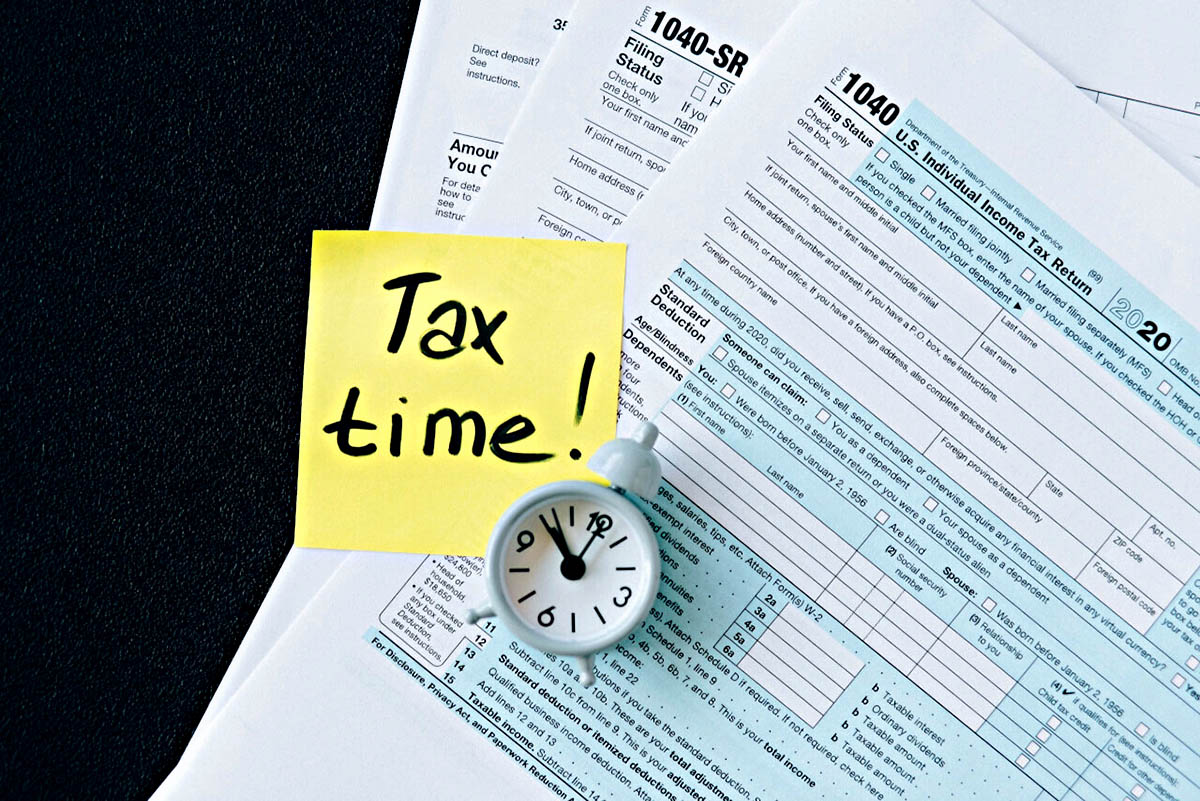

Finance
What Tax Bracket Am I In If I Make $80,000
Published: January 20, 2024
Find out which tax bracket you fall into with an $80,000 annual income. Explore the financial implications and plan your finances accordingly.
(Many of the links in this article redirect to a specific reviewed product. Your purchase of these products through affiliate links helps to generate commission for LiveWell, at no extra cost. Learn more)
Table of Contents
Introduction
Understanding tax brackets and knowing which one you fall into is crucial for anyone looking to manage their finances effectively. If you earn $80,000 per year, you may be wondering what tax bracket you fall into and how it impacts your overall tax liability. In this article, we will explore the concept of tax brackets, how to determine your tax bracket, and specifically dive into the tax brackets that apply to $80,000 in annual income.
But first, let’s start by explaining what tax brackets actually are. Tax brackets are the income ranges that determine the tax rate you are required to pay on your taxable income. The tax rates gradually increase as your income rises, meaning that individuals with higher incomes typically pay a higher percentage of their earnings in taxes.
Knowing your tax bracket is essential because it determines the amount of tax you owe to the government. By understanding your tax bracket, you can better plan your finances, optimize your tax strategies, and, when possible, take advantage of tax-saving opportunities.
Now that we have a basic understanding of tax brackets, let’s delve into how you can determine in which tax bracket you fall.
Understanding Tax Brackets
Tax brackets are an integral part of the progressive tax system implemented by the government. This system ensures that individuals with higher incomes contribute a greater proportion of their earnings to fund public services and government initiatives. Understanding how tax brackets work is key to managing your finances effectively.
The progressive tax system is structured in such a way that the more you earn, the higher your tax rate becomes. This means that as your income increases, you move through different tax brackets, each with its own corresponding tax rate. For example, the lowest tax bracket may have a lower tax rate, while the highest tax bracket could have a significantly higher rate.
It is essential to note that your tax bracket only applies to the portion of your income that falls within that specific bracket. This means that you are not taxed at the highest rate on your entire income if you fall into a higher tax bracket.
For example, let’s say you earn $80,000 per year. The tax brackets typically have a range of income, such as $0 to $9,950 for the lowest bracket, $9,951 to $40,525 for the next bracket, and so on. Each range corresponds to a specific tax rate. In this case, your $80,000 income would fall into multiple tax brackets, and each portion of your income would be taxed at its respective rate.
Understanding tax brackets is important for two primary reasons. First, knowing your tax bracket helps you estimate your tax liability accurately. This information allows you to plan for tax payments and budget your finances accordingly. Second, understanding how tax brackets work empowers you to explore strategies to minimize your tax burden legally.
Now that we have covered the fundamentals of tax brackets, let’s move on to determining which tax bracket you fall into based on your $80,000 income.
Determining Your Tax Bracket
Determining your tax bracket involves assessing your income and comparing it to the income ranges associated with each tax bracket. This will help you identify the tax rate that applies to your earnings. Several factors come into play when determining your tax bracket, including your filing status (single, married filing jointly, head of household, etc.), deductions, credits, and any other sources of income you may have.
To determine your tax bracket accurately, you will need to refer to the current tax brackets provided by the Internal Revenue Service (IRS). These brackets are updated annually to account for inflation and other economic factors. The IRS tax tables outline the income ranges and corresponding tax rates for each bracket.
When you have your income information and filing status ready, you can refer to the tax tables or consult tax software or online calculators to find which tax bracket you fall into. These resources will help you navigate through the tax brackets based on your specific circumstances.
With your $80,000 income, you may fall into different tax brackets depending on your filing status and deductions. It is important to note that the US tax system is progressive, meaning that only the portion of your income within each specific bracket is taxed at its respective rate.
For example, let’s assume that you have no deductions or credits and are filing as a single taxpayer. As of the current tax year, the income range for the 22% tax bracket is $40,526 to $86,375. Since your income of $80,000 falls within this range, you would be in the 22% tax bracket for that portion of your income.
However, keep in mind that the first $9,950 of your income would be taxed at the lower tax bracket, typically at a rate of 10% or 12%, depending on your income level. The income above $86,375 would also be subject to a higher tax rate in the next bracket. This tiered structure ensures that the tax burden is proportionate to your income.
Knowing your tax bracket is not only crucial for understanding your tax liability, but it also allows you to explore tax planning and optimization strategies. By conducting a thorough analysis of your income, deductions, and credits, you may be able to lower your overall tax burden through legal means.
Now that you have a clearer understanding of how to determine your tax bracket, let’s take a closer look at the specific tax brackets for an $80,000 income.
Tax Brackets for $80,000 Income
If you have an annual income of $80,000, your tax liability will be determined by the tax brackets that correspond to your earnings. Keep in mind that the tax brackets can vary depending on your filing status and deductions. Let’s explore the tax brackets that apply to an income of $80,000 for different filing statuses:
- Single Filing Status: For a single taxpayer with an $80,000 income, the following tax brackets would apply:
- 10% on the first $9,950 of taxable income
- 12% on taxable income above $9,950 up to $40,525
- 22% on taxable income above $40,525 up to $86,375
- Married Filing Jointly: For married couples filing jointly with a combined income of $80,000, the tax brackets are as follows:
- 10% on the first $19,900 of taxable income
- 12% on taxable income above $19,900 up to $81,050
- 22% on taxable income above $81,050 up to $172,750
- Head of Household: For individuals filing as head of household with an $80,000 income, the tax brackets are:
- 10% on the first $14,200 of taxable income
- 12% on taxable income above $14,200 up to $54,200
- 22% on taxable income above $54,200 up to $86,350
These examples provide a general overview of the tax brackets for an $80,000 income. Keep in mind that this is a simplified illustration and may not account for all individual circumstances, such as deductions, credits, and other sources of income.
It is worth noting that being in a higher tax bracket doesn’t mean your entire income is taxed at that rate. Each portion of your income falls into a specific tax bracket, and only that portion is taxed at the corresponding rate.
By understanding the specific tax brackets that apply to your $80,000 income, you can better assess your tax liability and plan accordingly. This knowledge can assist in optimizing your tax strategies and exploring potential deductions or credits to reduce your overall tax burden legally.
Now that we have explored the tax brackets for an $80,000 income, let’s discuss the factors that can influence your tax bracket placement.
Factors Influencing Tax Bracket Placement
Several factors can influence which tax bracket you fall into when determining your tax liability. Understanding these factors is crucial for effective tax planning and optimization. Here are some key factors that can impact your tax bracket placement:
- Income Level: Your income level is the primary factor in determining your tax bracket. As your income increases, you may move into higher tax brackets with higher tax rates. It’s important to note that not all income is subject to the same tax rate, as the progressive tax system only taxes specific portions of your income at each rate.
- Filing Status: Your filing status, whether you’re single, married filing jointly, married filing separately, or head of household, can affect your tax bracket placement. Different filing statuses have their own sets of tax brackets and tax rates.
- Deductions and Credits: Deductions and credits can lower your taxable income and potentially move you into a lower tax bracket. Examples of deductions include mortgage interest, student loan interest, and medical expenses. Tax credits, such as the Earned Income Tax Credit or Child Tax Credit, can directly reduce the amount of tax you owe.
- Investment Income: If you have investment income from sources such as dividends, capital gains, or rental properties, it can impact your tax bracket placement. Certain investment income may be subject to different tax rates or even taxed separately, potentially affecting which tax bracket you fall into.
- State and Local Taxes: State and local taxes, such as income tax, can also influence your overall tax burden. Some states have their own tax brackets and rates that may differ from federal tax brackets, impacting your overall tax liability.
Understanding these factors and how they interact with your specific financial situation is vital for effective tax planning. By considering your income level, filing status, deductions, credits, investment income, and state and local taxes, you can identify strategies to optimize your tax bracket placement and minimize your overall tax liability.
It’s important to remember that tax laws can change, and it’s advisable to consult with a tax professional or use tax software to ensure accurate calculations and compliance with current tax regulations.
Now that we have explored the factors that can influence your tax bracket placement, let’s discuss some strategies for lowering your tax bracket.
Strategies for Lowering Your Tax Bracket
Lowering your tax bracket can lead to significant savings on your overall tax liability. While it may not always be possible to reduce your income, there are several strategies you can employ to optimize your tax situation and potentially lower your tax bracket. Here are some effective strategies to consider:
- Maximize Retirement Contributions: Contributing to retirement accounts such as a 401(k) or an Individual Retirement Account (IRA) can lower your taxable income. By maximizing your contributions, you can potentially reduce your income to a lower tax bracket.
- Utilize Deductions and Credits: Take advantage of deductions and credits available to you. Deductions reduce your taxable income, while credits directly reduce the amount of tax you owe. Explore options such as student loan interest deduction, mortgage interest deduction, and education credits to optimize your tax situation.
- Manage Capital Gains: Be mindful of your capital gains and losses when selling investments. Timing the sale of assets strategically can help minimize the impact of capital gains on your tax bracket. Consider factors such as holding periods and tax-deferred accounts to optimize your investment-related taxes.
- Consider Tax-Advantaged Accounts: Explore tax-advantaged accounts such as Health Savings Accounts (HSAs) or Flexible Spending Accounts (FSAs) to lower your taxable income. These accounts can help you set aside funds for medical expenses or dependent care and reduce your overall tax liability.
- Optimize Your Business Expenses: If you are a business owner or self-employed, ensure that you are maximizing your deductions and taking advantage of any applicable business expenses. Keeping thorough records and consulting with a tax professional can help you identify deductible business expenses and potentially lower your tax bracket.
These strategies are just a starting point, and there may be specific deductions or credits that apply to your situation. It’s crucial to consult with a tax professional or use tax software to ensure you are taking full advantage of available strategies and accurately calculating your tax liability.
It’s important to note that while tax optimization is recommended, it is essential to comply with tax laws and regulations. Avoid engaging in any fraudulent or illegal activity when trying to lower your tax bracket, as this can result in severe penalties and consequences.
By taking proactive steps and utilizing strategies to optimize your tax situation, you can potentially lower your tax bracket, reduce your overall tax liability, and keep more of your hard-earned money.
Now that we have discussed strategies for lowering your tax bracket, let’s summarize the key points we covered.
Conclusion
Understanding your tax bracket and how it impacts your overall tax liability is crucial for effective financial management. If you earn $80,000 per year, knowing your tax bracket allows you to plan your finances, optimize your tax strategies, and potentially lower your tax burden.
Throughout this article, we have explored the concept of tax brackets, how to determine your tax bracket, and specifically discussed the tax brackets that apply to an $80,000 income. We have also highlighted factors that influence tax bracket placement and provided strategies for lowering your tax bracket.
By understanding tax brackets, you can accurately estimate your tax liability, make informed financial decisions, and explore opportunities to optimize your tax situation. It’s important to remember that tax laws can change, so staying updated or consulting with a tax professional is advisable for accurate calculations and compliance.
Remember, while lowering your tax bracket can result in significant savings, it’s essential to adhere to tax laws and regulations. Engaging in fraudulent or illegal activities can have serious consequences.
Ultimately, by managing your income, exploring deductions and credits, maximizing retirement contributions, and making strategic financial decisions, you can potentially lower your tax bracket and reduce your overall tax liability.
We hope this article has provided valuable insights into tax brackets and helped you gain a better understanding of your tax situation. By applying the information and strategies discussed, you can take control of your finances and make the most out of your hard-earned money.














